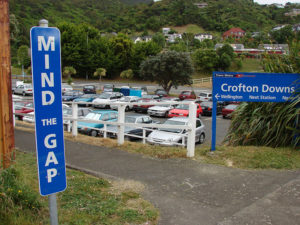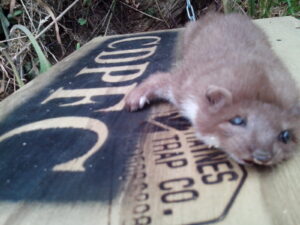It could be a Tom Cruise blockbuster: one man leads an army into battle against thousands of relentless predators. However, it’s not a movie (yet) – it’s the true story of a Wellington neighbourhood working to rid itself of rats, mice, possums, stoats and weasels.
“It’s a military exercise,” says Kelvin Hastie, who has spent much of his time over the past nine months galvanising locals into helping make Crofton Downs the country’s first predator-free suburb.
Is Hastie a nature expert, or does he work for DOC or the council? Nope. The Crofton Downs resident and father of two has an IT-related day job. But it all started with an urban mustelid sighting last year: Hastie was walking down the road and saw what he now believes to be a weasel scampering past, in the middle of the day, in his suburb – and he got mad.
“I thought, this is ridiculous. How will our native flora and fauna stand any chance? At that point, I realised there was too much talk and not enough action. So I snapped into action!”
Once he started researching the issues, Hastie discovered there were plenty of groups and individuals who were already doing great work, some for decades, and he wanted to get involved.
He came across the Halo website, which encourages Wellingtonians to play a part by setting their own traps at home, and waited for the right moment. When it came, via a competition for one community to win $5,000 towards predator control, Hastie seized the opportunity and took the competition details along to a local community meeting. From there, he did leaflet drops and collected votes online, and also created a step-by-step, one year proposal for Halo. It worked: last August, Crofton Downs won a $5,000 grant.
Next Hastie set up a larger meeting, collected locals’ names and details, then went door to door delivering traps and explaining how to use them safely, introducing himself and getting to know people in the process. “I wanted to make it clear that I wanted to kill things, not people… that I wasn’t a serial killer!”
Over 140 households in Crofton Downs are now actively trapping. Hastie, whose story recently reached the penthouses of Manhattan after he was interviewed in the New Yorker, says he hasn’t obsessed over the reluctant minority who haven’t signed up. “I wouldn’t make someone get involved. I just wanted to show there was an opportunity, it’s safe, we’re not using poisons. It’s about giving people confidence and empowering them to make their own decisions.”
But Crofton Downs doesn’t act in a vacuum. There are also what Hastie calls “Border Patrol” suburbs, aka Ngaio and Wadestown, which are playing their part by terminating rats and mice in the surrounding areas. The rat headcount has significantly reduced lately, suggesting the population is declining. Mission: well underway.
Hastie keeps an email list to send progress updates and maintain the momentum, and residents email him with their latest talleys. (“I’ve got over 100 photos of dead rats on my phone,” he mentions casually during our interview.) People ask him what breed of rat they’ve just caught, something he’s learned about on the job.
But in almost nine months of terminating, the biggest challenge hasn’t been the furry fiends but the vocal naysayers: people repeatedly telling him that it can’t be done. “People say rats live in composts. That’s bulls***. Eventually they come out and then we catch them.” (The current talley, after nine months, is over 85 rats, 120 mice, and eight weasels in Crofton Downs; one rat pairing can result in up to 20,000 births within a year, so every death is a triumph.)
In some parts of Crofton Downs, there’s a trap set in every back yard. But it doesn’t stop there, with 43 DOC 200s also set in the outlying bush. “It’s like Jurassic Park,” Hastie says of the reserves that encircle this community. He’s is in talks with Transpower about installing more surrounding traps, and has partnered with Bowen Hospital to help them set up their own. “You’ve got to engage the full community.”
In September the one-year project will draw to a close, but not the work itself. “The community is still laying out traps and we’re still catching rats along the edges [of the suburb]. But we’ve done the work, it was 20 rats in 20 days and we’re getting down to zero. We’ve got 140 hands in the community walking along trap lines. My kids check the trap lines too and think nothing of seeing a rat’s head.”
Hastie would love to see Wellington eventually become completely predator free. “But it’s not easy. It’s a huge amount of hard work. If you want to start something, talk to people who’ve done it before.”
If you’re ready to roll up your sleeves and get your local community trapping, talk to Hastie. He’s already done most of the hard yards in true pioneering fashion. Or, if you’re keen to start smaller and you’re in Wellington, sign up as a Halo Household and just put out one trap. It all adds up.




